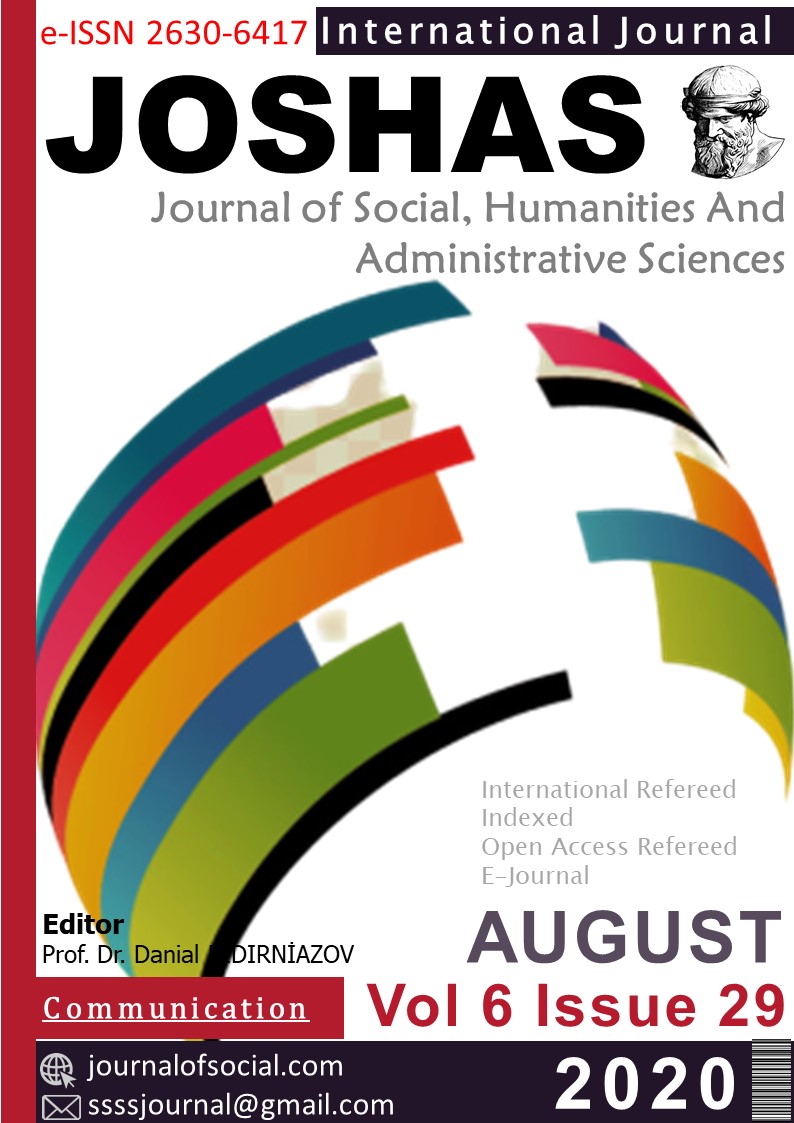Author :
Abstract
Sinema filmlerini duyurmanın en geleneksel ve yaygın yöntemlerinden birisi film afişleridir. Geçmişten günümüze film afişleri, gelişen ve değişen teknolojiyle beraber oldukça değişmiştir. Film afişi filmin bir temsilidir ve bu anlamda kullanılan renk, fotoğraf, yazı gibi öğeler film açısından önemlidir. Afiş içeriğinin öğeleri, temsil ettiği göstergeler açısından anlamsal ve sembolik olarak irdelenmelidir. Görsel sanatlar toplumların kültürel kodlarını da yansıtır. Bu bağlamda seçtiğimiz örnek film olan “Old Boy” filminin Güney Kore filmi olması ve Amerika’da yeniden çekilmesi, kültürlerarası bir boyutta afişlerin incelenmesi açısından önemlidir. İki farklı kültürün aynı hikayeyi farklı bağlamlarda nasıl işlediği ve pazarladığı bu çalışmanın değindiği noktalardandır. Aynı zamanda iki film arasında geçen yaklaşık on senelik periyot içerisinde afişlerin geçirdiği değişime de değinmek gereklidir. İlk filmin çekildiği 2003 yılı henüz Web 2.0’ın yeni ortaya çıktığı bir dönemdir. 2013 yılı ise film pazarlamasında sosyal medyanın yaygın kullanılmaya başlandığı bir döneme denk gelmektedir. Bu bağlamda iki filmin afişlerinde dijitalleşmenin ne kadar etkisi olduğunu tespit etmek gereklidir.
Keywords
Abstract
One of the most traditional and common methods of announcing motion pictures are movie posters. Movie posters from the past to the present have changed a lot with the developing and changing technology. The movie poster is a representation of the movie, and items such as color, photography, and text are important for the movie. Elements of the poster content should be analyzed semantically and symbolically in terms of the indicators it represents. Visual arts also reflect the cultural codes of societies. In this context, it is important for the movie “Old Boy”, which we chose, to be a South Korean movie and remaking in America, in terms of examining posters in an intercultural dimension. How two different cultures process and market the same story in different contexts is one of the points mentioned by this study. It is also necessary to mention the change of posters during the period of approximately ten years between the two films. The year 2003, when the first film was made, was just the emergence of Web 2.0. 2013 corresponds with the widespread use of social media in film marketing. In this context, it is necessary to determine the effect of digitalization on the posters of the two films.
Keywords
- Barthes, R. (1986). Göstergebilimin İlkeleri. Çev. Mehmet Rıfat, Sema Rıfat, İstanbul, Sözce
- Barthes, R. (1986). Göstergebilimin İlkeleri. Çev. Mehmet Rıfat, Sema Rıfat, İstanbul, Sözce Yayınları.
- Barthes, R. (2003) Çağdaş Söylenler, Çev. Tahsin Yücel, İstanbul, Metis Yayınları.
- Brashinsky, M.(1998). "The Spring, Defiled: Ingmar Bergman's Virgin Spring and Wes Craven's LastHouse on the Left." Play it Again. Sam: Retakes On Remakes. Ed. Andrew Horton and Stuart McDougal. Berkeley, CA: University of California Press, pp. 162-171.
- Eco, U. (1991). Alımlama Göstergebilimi, Çev. Sema Rıfat, Düzlem Yayınları, İstanbul.
- Peirce, C. S. (1977). Semiotics and Significs. Ed Charles Hardwick. Bloomington I.N.: Indiana University Press.
- Rıfat, M. (2009). Göstergebilimin ABC’si, Sel Yayınları, İstanbul. İnternet Kaynakları
- https://www.oxfordlearnersdictionaries.com/definition/american_english/semiotics https://boxofficeturkiye.com/film/ihtiyar-delikanli-2004155





